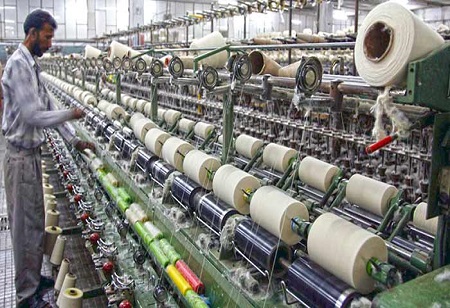Recently, Union Minister Piyush Goyal called for the development of 100 Indian textile machinery champions that are recognized across the world and urged them to reduce import dependence of the sector through concerned efforts between the textile engineering industry and the government. Mr. Goyal also urged the
textile industry to focus on speed, skill and get into innovative partnership. A CII-Kearney joint report suggests that the government should focus on putting in place key enablers to attract investments in the domestic
textiles sector and optimise operations for improved market access and cost-competitiveness while creating an enabling business environment.
Currently,
textile and apparel exports account for 11 per cent of India’s overall merchandize exports. There is growth in export because of growing urbanization and rising income levels of middle class population. India’s competitive advantage in this sector can also be attributed to the presence of the entire value from fibre to fashion within the country. These things will help India to stabilize its position in the world textile market. “It is important to synergise efforts of arms of the government between textiles and Ministry of Heavy Industries in our quest of increasing efficiencies”, says Piyush Goyal.
Embracing Atmanirbhar Strategy
Prime Minister NarendraModi has embraced ‘Atmanirbhar Bharat’ or ‘self-reliance’ as a development strategy to reboot the Indian economy. Textile sector of the country is planning to become end-to-end self-reliant in the coming years. India has abundant supply of raw material and it is the largest producer of man-made fibres like polyester and viscose. In the last two decades, a large spinning, weaving and apparel making capacity has been established to convert the raw materials into end products. Another added benefit for India is that there are plenty of labours available as well as a strong domestic market already exists.
High Quality Machinery Manufacturing
Focus on quality will help the Indian textile industry to capture bigger markets and higher productivity. The modern and upgraded textile machinery ecosystem would have a cascading impact on unorganised Indian textile industry. This will also set the momentum for continuous innovations and advancements resulting into ever evolving and enhancing competitive capabilities along the value chain.
High quality machinery manufacturing facility will change the inertia of the status quotient for Indian textile industry.It will augment the dynamics along value chain, enhance the domestic consumption and further boost the exports of higher value goods while gradually reducing the import dependency.
Incentivizing the Production of MMF Fabric
The textile ministry recently launched the Production Linked Incentive (PLI) scheme. The PLI scheme expands the textile ministry’s focus on the PPE production to make India the second largest producer of PPE kits worldwide. The PLI scheme incentivizes production of MMF fabric and apparel, and technical textiles in India. This scheme has the power to transform the processing and weaving segment and provide a strong base for apparel manufacturers. India is on the way to become one of the most prominent producers of technical textiles.
Providing Training to Workers
The PLI scheme is also responsible for enhancing competitiveness in the industry by offering time-bound incentives. This scheme attracted rupees 19,000 crore investments besides generating a cumulative turnover of over rupees 3 lakh crore. The aim of this scheme is not to support the industry permanently but help it to become self-reliant.
Most of the stakeholders are collaborating with the state and central governments to reap full benefits of the scheme. They have set up joint training projects in association with leading skill institutions. This will ultimately help in facilitating growth of industry and boost the economy development of country.
Upgrading Skills
To become self-reliant in textile sector, the first and foremost thing government is focusing on to do is upgrading the skills of workers, providing financial assistance and integrating the sector with the latest technology. “To assist weavers in continuing to make world class products, India needs to learn both global and domestic best practices”, says Prime Minister NarendraModi.
The exchange of ideas and sharing of best practices will create new avenues for collaboration. The government is planning to conduct seminars on regular basis to bring the professionals from different states on the same platform and discuss with them about the working pattern of textile Industry in detail. Textile Industry has always brought opportunities and domestically it is among the highest job providers in India.
The Way Forward
In conclusion, it should be realized that Indian textile industry today is catering to the demands of the world and it has the potential to become self-reliant. The government has set a target of $100 billion for textiles and garment exports over the next five years, and the textile industry has an important part to play in achieving it.
Also, Indian consumers are extensively looking for variety when it comes to choosing the quality of fabric. This process, which benefits Indian textile industry, cannot be executed without giving an appropriate weightage to the value chains. Ultimately, a balance has to be achieved and maintained.
